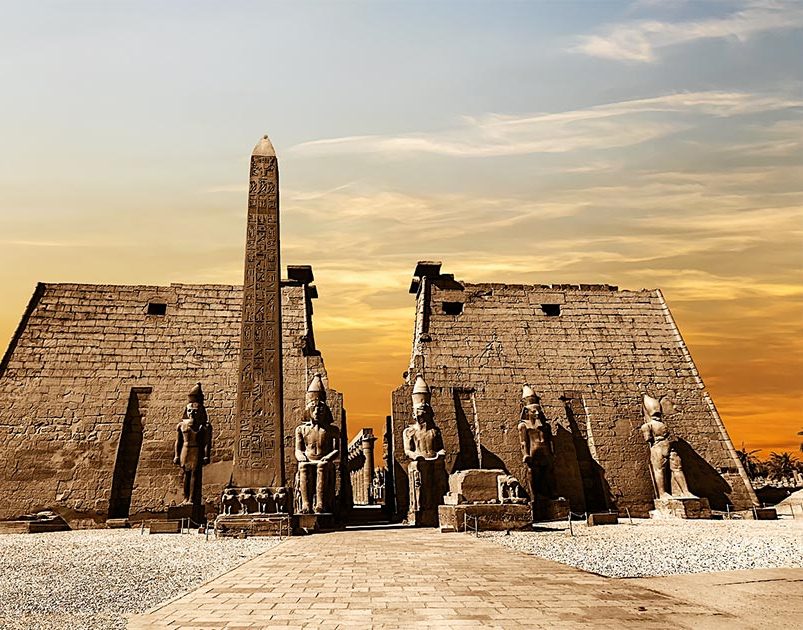The Luxor Temple is a magnificent ancient Egyptian temple complex located on the east bank of the Nile River in the city now known as Luxor (ancient Thebes). Renowned for its grandeur, the temple was dedicated to the rejuvenation of kingship; it might have been where many of the pharaohs of Egypt were crowned. Constructed primarily by Amenhotep III and Ramses II, this temple has stood for thousands of years as a testament to the religious and political might of the pharaohs. It has served as a place of worship, a part of the city’s infrastructure, and a historical touchstone for scholars and tourists alike.
Get your dose of History via Email
Historical Background of Luxor Temple
The discovery of Luxor Temple has roots in the modern era, with the temple’s existence well-known to local Egyptians. However, it was not until the 19th century that the temple gained significant attention from the Western world. The temple’s construction began around 1400 BCE under the reign of Amenhotep III and was completed by Tutankhamun and Horemheb, with further additions by Ramses II. Over the centuries, various rulers left their mark on the temple, enhancing its complexity and grandeur.
Unlike other temples, which were dedicated to a god or gods, Luxor Temple was dedicated to the rejuvenation of kingship. It is possible that it was the site where many of the pharaohs of Egypt were crowned. The temple’s significance continued into the Roman period, where it was repurposed for the Roman state religion. The temple was buried under the sands for centuries, with parts of it remaining in use by local residents.
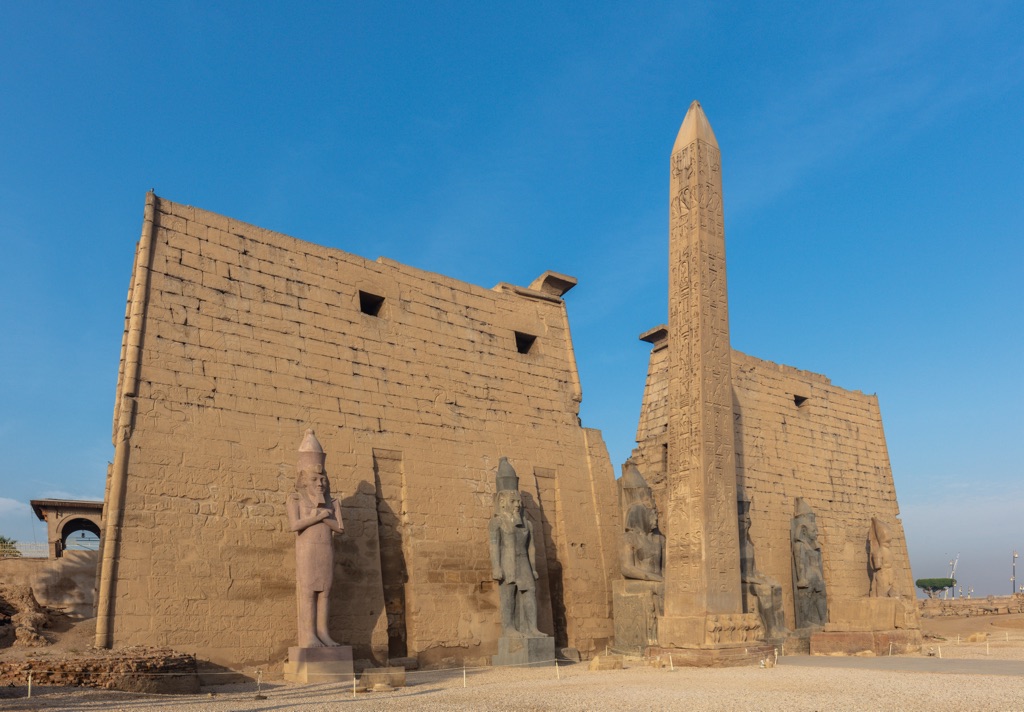
It was in the 1880s that the temple was systematically excavated by Gaston Maspero, the then head of the Egyptian Antiquities Service. Since then, various archaeological missions have worked to restore and preserve the temple complex. The temple has also been the scene of several historically important events, including the annual Opet Festival, where statues of the gods were paraded from Karnak to Luxor Temple.
Throughout its history, Luxor Temple has been a place of continuous activity. The temple complex was added to by successive rulers, including Alexander the Great, who built a chapel inside the complex. In the Christian era, the temple even served as a church. Today, the temple stands as a significant historical site, drawing visitors from around the world.
The temple’s long history is marked by various phases of occupation and use. In the Islamic era, the Mosque of Abu Haggag, which was built over part of the temple ruins, is a testament to the site’s continued religious significance. The Luxor Temple has thus been a place of worship for multiple religions over thousands of years, showcasing the layers of history that can coexist in a single location.

About Luxor Temple
Luxor Temple is an architectural marvel, showcasing the grandeur of ancient Egyptian construction techniques. The temple complex was built with sandstone from the quarries of Nubia, with its design reflecting the Egyptian belief in the divine right of kings. The temple’s axis was aligned with the Karnak Temple and the Nile, symbolizing the connection between the pharaohs and the gods.
The entrance to the temple is marked by the massive Ramesses II pylon, which leads to the peristyle courtyard. This area is surrounded by a double row of columns with papyrus-shaped capitals. Beyond this courtyard lies the colossal colonnade hall, composed of 14 massive columns, leading to the inner sanctuaries where the most sacred rituals were performed.
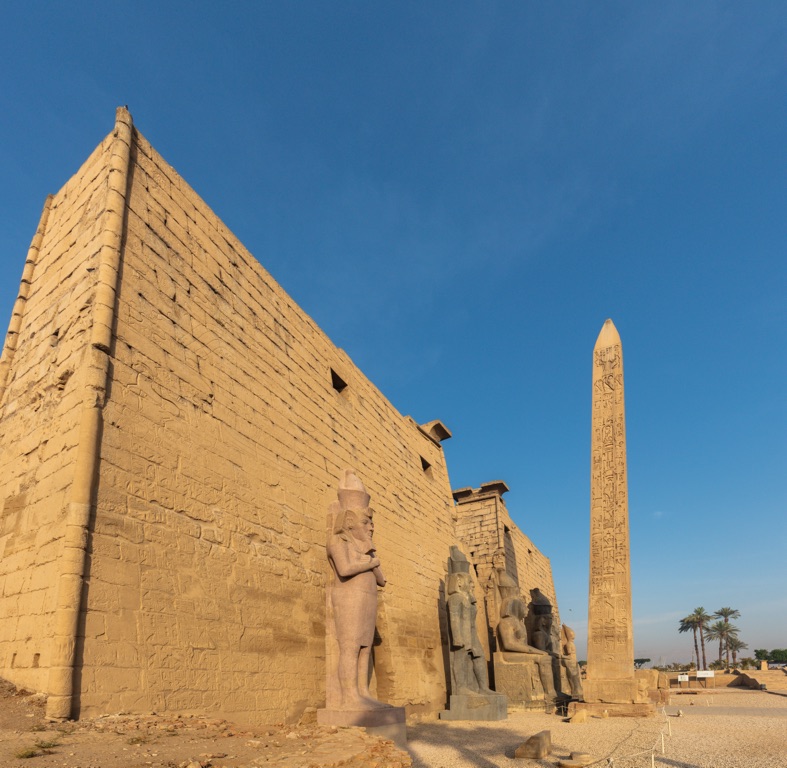
One of the architectural highlights of Luxor Temple is the Abu Haggag Mosque, which sits atop the ancient walls of the temple itself. This integration of the mosque into the temple’s structure is a unique feature and represents the layered history of the site. The temple also features various statues, obelisks, and carvings that depict the pharaohs and gods of ancient Egypt.
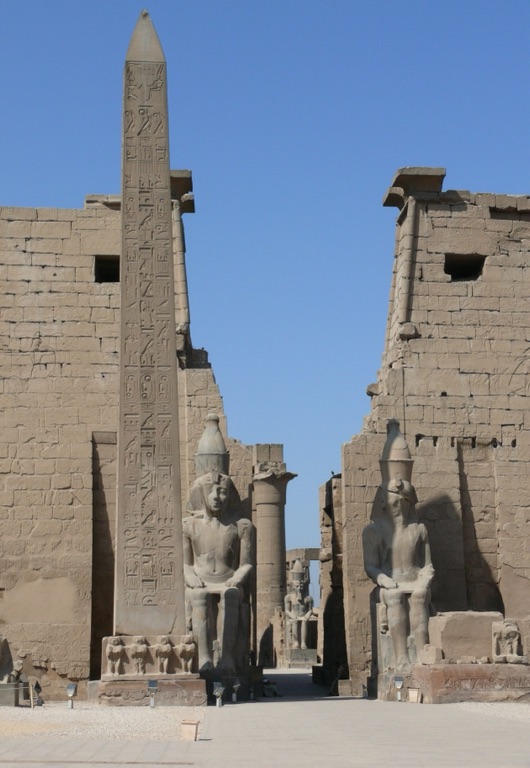
The construction methods of Luxor Temple were typical of ancient Egyptian temple architecture, involving precise stone-cutting techniques, the transportation of massive stone blocks, and intricate carving skills. The temple’s preservation allows visitors to witness the original colors and hieroglyphs that adorned the walls, providing insight into the religious and cultural practices of the time.
Over time, the temple has undergone several restoration projects to stabilize the structure and conserve its detailed reliefs and carvings. These efforts have been crucial in preventing further deterioration of the temple and ensuring that it remains a source of historical and cultural knowledge for future generations.
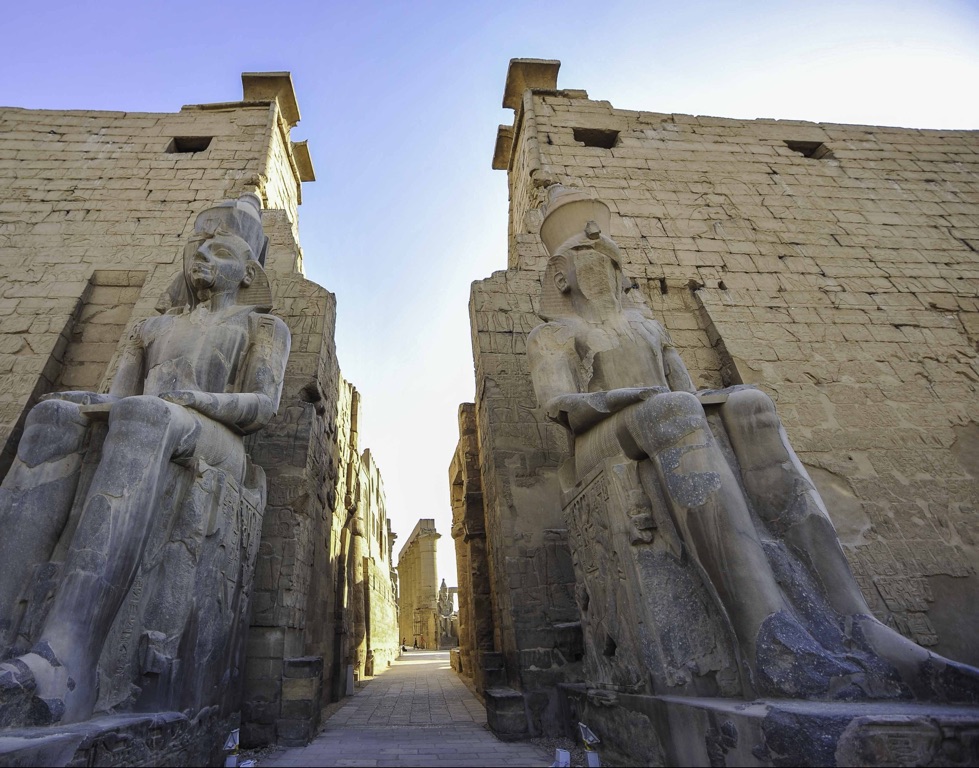
Theories and Interpretations
Several theories and interpretations surround Luxor Temple, reflecting its complex history and the many roles it has played. One theory suggests that the temple was designed to represent the human body, with the sanctuary being the head and the courtyards representing the legs. This interpretation aligns with the ancient Egyptian belief in the temple as a microcosm of the universe.
The temple’s use has been a subject of much speculation. While it is clear that it played a role in the coronation of pharaohs, some scholars believe it also served as a center for important religious ceremonies and festivals, such as the Opet Festival. This event symbolized the divine birth of the king and reinforced the pharaoh’s divine right to rule.
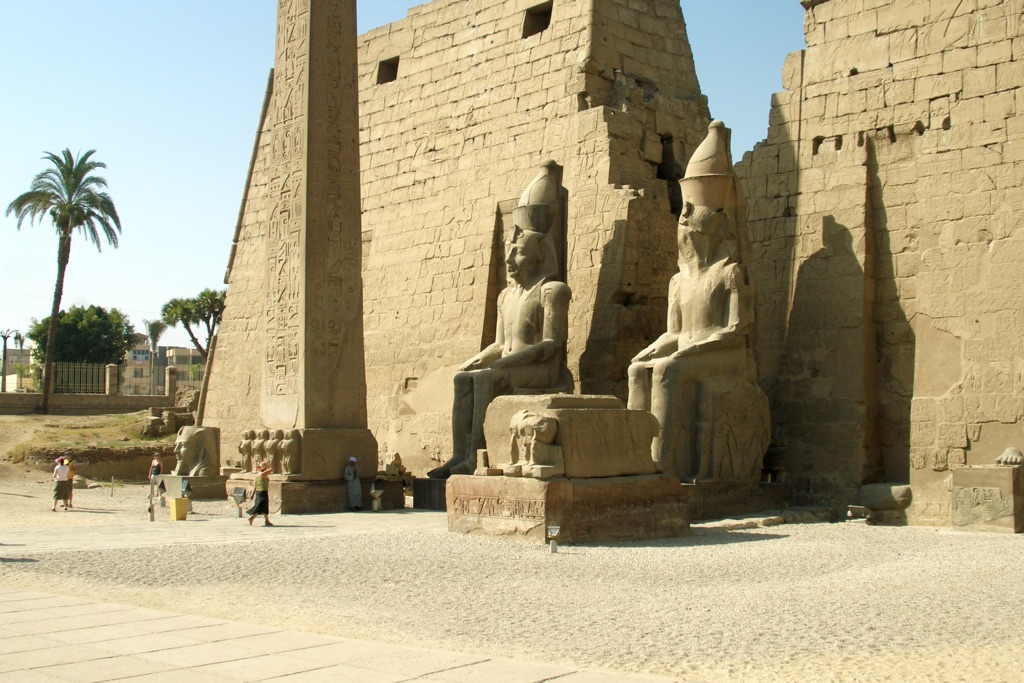
Mysteries still abound regarding the full extent of the temple’s significance. Some carvings and hieroglyphs have been matched to historical records, providing a narrative of Egypt’s history from the perspective of its rulers. However, other aspects of the temple’s story remain elusive, open to interpretation by historians and archaeologists.
Dating of the temple has been carried out using various methods, including carbon dating and analysis of historical records. These studies have helped to establish a timeline for the construction and modification of the temple complex, shedding light on the reigns of the pharaohs who contributed to its grandeur.
The interpretations of Luxor Temple are continually evolving as new discoveries are made. The temple’s complex history, from its construction to its use by different cultures, makes it a rich subject for study. Each new piece of evidence adds to the understanding of this ancient wonder, providing a deeper appreciation for its significance.
At a glance
- Country: Egypt
- Civilization: Ancient Egyptian
- Age: Approximately 3400 years old (circa 1400 BCE)
Conclusion and Sources
- Wikipedia – Luxor Temple: https://en.wikipedia.org/wiki/Luxor_Temple
- UNESCO – Ancient Thebes with its Necropolis: https://whc.unesco.org/en/list/87

